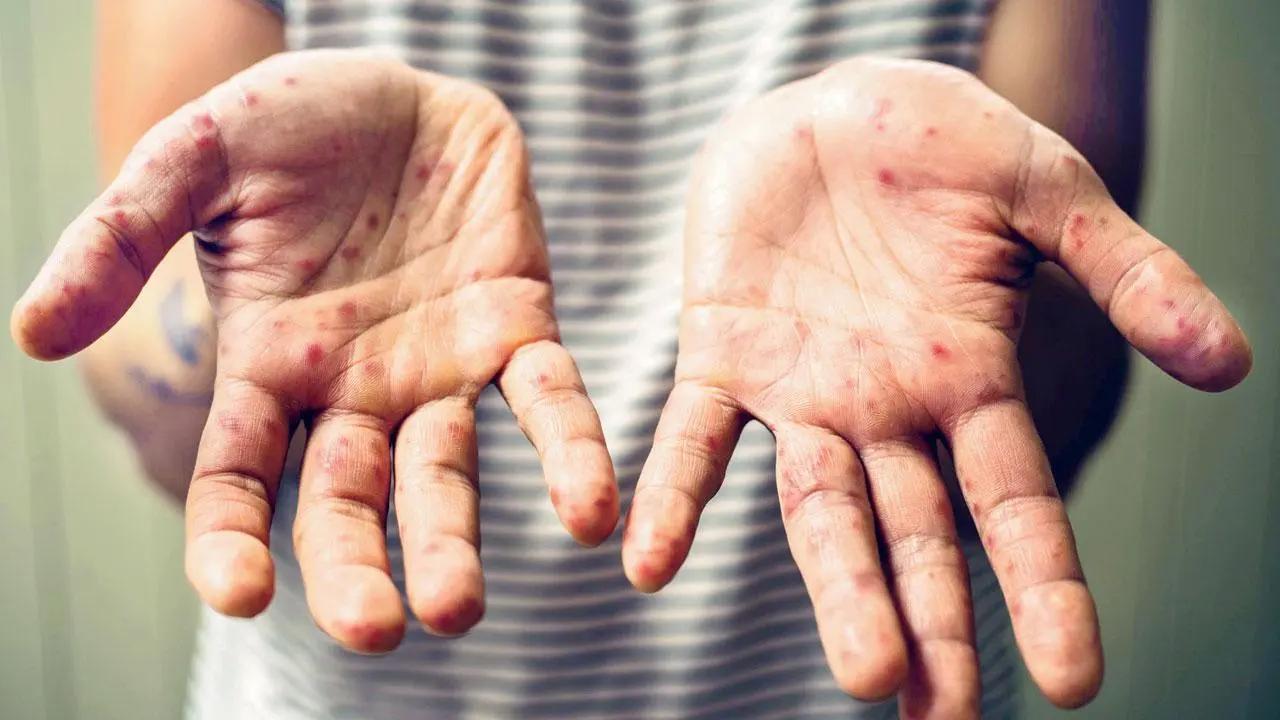Awareness of common monsoon diseases, their symptoms, and preventive measures is crucial for parents and caregivers. By implementing preventive measures and seeking timely medical attention, we can safeguard the health and well-being of our little ones during this season

Image for representational purposes only. Photo Courtesy: iStock
The monsoon season brings relief from the scorching heat but also presents unique health challenges, especially for babies and children. The increased humidity and stagnant water during this time create favourable conditions for the spread of various diseases. Being aware of the common monsoon diseases that affect babies and children is crucial for prevention, early recognition and timely medical intervention. Dr Prashant Moralwar, consultant paediatrician, Motherhood Hospital Kharghar lists down 10 common monsoon diseases in babies and children, their common symptoms and preventative measures
ADVERTISEMENT
1. Dengue fever:
Dengue fever is a mosquito-borne viral infection that can cause severe illness in children. Symptoms include high fever, severe headache, joint and muscle pain, rash and in severe cases, bleeding. It is essential to prevent mosquito breeding by maintaining a clean and dry environment and using mosquito repellents.
2. Malaria:
Malaria is another mosquito-borne disease caused by the Plasmodium parasite. Symptoms include recurring episodes of high fever, chills, sweats, headaches and body aches. Taking measures to prevent mosquito bites, such as using bed nets and insect repellents is crucial in malaria-endemic regions.
3. Chikungunya:
Chikungunya is also a viral disease transmitted by mosquitoes. Symptoms include high fever, severe joint pain, headache, rash, and fatigue. Adequate mosquito control measures and wearing protective clothing can help prevent the transmission of this disease.
4. Leptospirosis:
Leptospirosis is a bacterial infection primarily transmitted through contact with contaminated water. Symptoms in children can range from mild to severe and include high fever, headache, muscle pain, nausea, and vomiting. Avoiding contact with stagnant water and maintaining good hygiene practices are essential preventive measures.
5. Typhoid fever:
Salmonella typhi is the bacterium that causes typhoid fever. It spreads through contaminated food and water. Long-lasting fever, headache, stomach pain, appetite loss and exhaustion are typical symptoms. Essential preventive measures include maintaining good hygiene and consuming safe, well-cooked food and drink and timely vaccination
6. Diarrheal diseases:
During the monsoon season, water and food contamination increases the risk of diarrheal diseases, such as gastroenteritis. Symptoms include loose stools, abdominal pain, vomiting, and dehydration. Ensuring safe drinking water and practising good hygiene are crucial in preventing diarrheal illnesses.
7. Respiratory infections:
Respiratory infections, including the common cold, influenza, and pneumonia, are more prevalent during the monsoon season. Children may experience symptoms like cough, runny nose, sore throat, fever and difficulty breathing. Maintaining good respiratory hygiene such as covering the mouth and nose while coughing or sneezing can help prevent the spread of these infections.
8. Hand, foot, and mouth disease (HFMD):
A viral disease frequently affecting young children is HFMD. It results in mouth sores or blisters, as well as blisters on the hands, feet, and occasionally the buttocks. Common symptoms include a fever, a sore throat and appetite loss. It is essential to practise proper hygiene to stop the spread of HFMD.
9. Conjunctivitis:
Pink eye, also known as conjunctivitis, is an inflammation of the conjunctiva, the delicate membrane that covers the eye. It may be brought on by bacteria, viruses or allergies. Redness, itching, eye-watering and discharge are symptoms. Conjunctivitis can be stopped from spreading by practising good eye hygiene and avoiding close contact with those who are ill.
10. Fungal infections:
Fungal infections, such as ringworm and athlete's foot, thrive in warm and moist conditions. These infections can cause itchy, red rashes on the skin, scalp, or feet. Maintaining good personal hygiene, keeping the skin dry, and avoiding sharing personal items can help prevent fungal infections.
Here are some preventive measures parents can adopt to keep their children safe from illnesses:
- Maintain a clean and dry environment.
- Avoid stagnant water and remove potential mosquito breeding sites.
- Use mosquito repellents and bed nets to prevent mosquito bites.
- Practice good hygiene
- Consume safe and properly cooked food and water.
- Avoid direct contact with infected individuals.
- Follow respiratory hygiene such as covering the mouth and nose while coughing or sneezing.
- Vaccination whenever possible
The monsoon season brings its share of health challenges for babies and children. Awareness of common monsoon diseases, their symptoms, and preventive measures is crucial for parents and caregivers. By implementing preventive measures and seeking timely medical attention, we can safeguard the health and well-being of our little ones during this season. Remember, prevention is key in mitigating the impact of monsoon-related diseases and ensuring a safe and healthy environment for children.
Also Read: Coffee gives brain 'special' boost, even beyond caffeine content
 Subscribe today by clicking the link and stay updated with the latest news!" Click here!
Subscribe today by clicking the link and stay updated with the latest news!" Click here!







